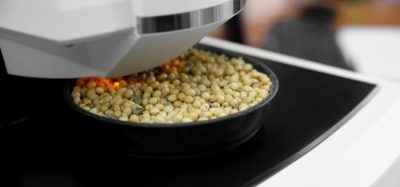Energy, nutrition and the quality of breads; an overview of ‘EU-FRESHBAKE’
- Like
- Digg
- Del
- Tumblr
- VKontakte
- Buffer
- Love This
- Odnoklassniki
- Meneame
- Blogger
- Amazon
- Yahoo Mail
- Gmail
- AOL
- Newsvine
- HackerNews
- Evernote
- MySpace
- Mail.ru
- Viadeo
- Line
- Comments
- Yummly
- SMS
- Viber
- Telegram
- Subscribe
- Skype
- Facebook Messenger
- Kakao
- LiveJournal
- Yammer
- Edgar
- Fintel
- Mix
- Instapaper
- Copy Link
Posted: 3 December 2008 | A. Le-Bail and R. Zuniga, ENITIAA – GEPEA; T. Lucas, Cemagref; M. Sikora, University of Agriculture Balicka; C. M. Rosell, IATA-CSIC; D. Curic, University of Zagreb; T. Park, TTZ-EIBT; V. Kiseleva, Russian Academy of Science, IBCP RAS; M. Pitroff, MIWE; I. Van Haesendonck, PURACOR; M. Bonnand-Ducasse, BIOFOURNIL; M. Koczwara, BEZGLUTEN; V. Cerne, SCHAER R&D | No comments yet
The European bread industry is using refrigeration more and more to extend the shelf life of bakery products. The associated technologies, called bake-off-technology, allows the retail of freshly baked breads made from industrial frozen (and non frozen) products. Energy used for bread making, nutrition facts and quality of the final products are often interacting. Selected results taken from the ongoing European funded project ‘EU-FRESHBAKE’ (2006-2009) are presented, highlighting the coupling between product quality and process.
The European bread industry is using refrigeration more and more to extend the shelf life of bakery products. The associated technologies, called bake-off-technology, allows the retail of freshly baked breads made from industrial frozen (and non frozen) products. Energy used for bread making, nutrition facts and quality of the final products are often interacting. Selected results taken from the ongoing European funded project ‘EU-FRESHBAKE’ (2006-2009) are presented, highlighting the coupling between product quality and process.
The European bread industry is using refrigeration more and more to extend the shelf life of bakery products. The associated technologies, called bake-off-technology, allows the retail of freshly baked breads made from industrial frozen (and non frozen) products. Energy used for bread making, nutrition facts and quality of the final products are often interacting. Selected results taken from the ongoing European funded project ‘EU-FRESHBAKE’ (2006-2009) are presented, highlighting the coupling between product quality and process.
Bread is a very basic food that most consumers eat several times a day. The attitude of consumers toward bread is quite complex. They may have very different expectations in terms of quality (i.e. thick and hard crust vs. no crust), in term of nutrition (‘diet’ bread vs. ‘pleasure’ bread) or again in term of convenience (short or long shelf life). These varying attitudes resulted in a very large offer and in the development of new technologies and new markets. Among these, bake off technology (BOT), which represents an alternative to conventional ‘scratch’ conventional baking, is growing at a much faster rate than any other. A generic presentation of BOT would be to say that it consists of delivering and/or producing bread, viennoiserie or other bakery products produced at an industrial scale to downtown small ‘bakeries’ or retailers. These baking shops can be operated by a minimally trained staff who can prepare these products on demand, using basic equipment such as a proving cabinet and an oven. If the total bread consumption per capita is slowly decreasing, it appears that the market share of BOT is growing at a very high rate (approximately 10 per cent/year).
Several technologies for bread making exist on the market and are listed in Table 1. The three main technologies for BOT are the Un-fermented Frozen Dough (UFD), the Partially Baked Frozen Bread (PBF) and the Partially Baked Un Frozen (PBUF).
Based on the aforementioned reasons, the EU-FRESHBAKE project began in October 2006 for a period of 36 months. Twelve European and non-European countries are involved in this project (see Figure 1 and Table 2) and among them are five industrial companies. The main objectives of the project are to help the industry in producing BOT products of higher nutritional value with lower energy consumption for the benefit of the consumer and the environment.
Innovation and consumers: a European survey
The expectation of consumers towards innovation in bakery products is a very complicated subject. In order to clarify the situation, a consumer survey has been completed within the EU-FRESHBAKE project. A face-to-face interview (plus a questionnaire) has been carried out with 1,050 consumers in five different countries; Belgium – Flemish county, Belgium – Walloon county, Croatia, Spain, France and Poland. The survey was performed between October 2006 and March 2007. The design of the questionnaire included several aspects such as practices of purchases and consumption, psychological representation of bread, interest and importance of nutrition, interest about gluten-free bread, interest in the energy needed to produce bread (environmental concern), degree of importance of the shelf life of bread and degree of acceptance of ‘innovation’ in bread. A detailed report is available in Lambert et al (2008)5. Among the key results, quite different points of view were observed between Northern Europe (Poland, Belgium-Flemish) and France. French consumers were attracted by freshly baked crispy rolls whereas schematically, the consumers from northern Europe were considering sandwich bread and viennoisierie. Two main groups were identified. The ‘crust consumers group’ represented approximately 62 per cent of the sample, whereas the ‘crumb consumers group’ made 38 per cent. The ‘crust group’ gathered frequent customers (at least on bread purchase per day), who were more interested in the hedonic perception and who have a minimal interest in the shelf life. The crumb group represented non frequent customers. This group was more interested in nutrition issues and shelf life, and by energy demand of the process. This kind of result is important. Indeed, the making of a bread crust requires long baking at a high temperature and is therefore energy demanding. The convenience is also an important aspect. Some consumers buy bread once a week. For these consumers, shelf life, labelling (i.e. nutrition facts) and eventually information on the environmental impact of the product (i.e. CO2 tags) appeared as important parameters that may condition the desire to purchase. On the other hand, customers belonging to the ‘crust group’ paid little attention to the shelf life. Another interesting and quite striking issue was the attitude of consumers toward gluten-free products. For some consumers who know what gluten is, gluten-free products may be interesting to experience. Some consumers who were less informed about what gluten is were suspicious about such labelling. The lack of information about gluten means that a ‘gluten-free’ labelling may be considered in two opposite directions: either as a chemical that is withdrawn (positive image) or as a natural compound that has been withdrawn to a conventional recipe (negative image).
Innovations in bread making such as those that could arise from the EU-FRESHBAKE project are of interest for urban and young consumers. Distrust towards the food industry was detected for three-quarters of the sample, who considered that food products produced by the industry are not as good or tasty and approximately 60 per cent of the sample considered that they are less healthy. This point highlights the fact that a lot of effort is carried out nowadays in the decoration and atmosphere that is created in shops using BOT products (baking stations, affiliated bakers) to obtain a warm and cosy atmosphere that gives pleasure and encourages trust from the consumer.
Focus on the crust
Crust outlook is a very important point for the consumer. Its colour, gloss and structure allow the consumer to identify different types of bread. However, some consumers dislike crust. Clear support of this is the presence of crust less sandwich bread in France, Spain and other European countries (Figure 3). This type of bread seems to be more than an industrial bet and is now settled in the bread market.
Crust problems sometimes appear with part baked and frozen bread (PBF), which is one of the success stories of BOT. It represented 63 per cent of the market of frozen breads in Europe in 2003 (32 per cent for UFD and five per cent for FBF). Crust flaking may occur during the second baking. Investigations carried out in our group showed that post baking chilling has a certain importance with respect to the final quality of the product. The final quality can be enhanced with selected improvers (Rosell & Gómez, 2007)10. A study proposed by Le-Bail et al (2005)7 and summarised in Le-Bail et al (2006)6 showed that the conditions during the post baking chilling of partially baked bread was the most influent on the final crust flaking of frozen part baked. The use of humid air seems to reduce the crust flaking of the bread. Moisture during the fermentation step was the other process parameter that was the most influential on crust flaking (higher moisture => lower the crust flaking). One of the reasons as explained in Ribotta & Le-Bail (2007)9 is that the crust is contracting during chilling, exposing the crust to strains that cannot be supported if the crust is too rigid. The oven-rise of some BOT products may also be jeopardised by the early setting of the crust and the mechanisms underlying the crust setting are under study in the frame of this project (Vanin et al, 2008)12. A PhD study at ENITIAA is working on the modelling of strain and stresses that develop during the freezing of bread. Depending on formulation, baking condition (i.e. the shorter the baking, the larger the contraction during chilling and freezing), is taken into consideration.
Freezing: a key step of BOT with impact on nutritional properties
Much research effort is devoted by both scientists and industrial companies to reduce the glycaemic index (GI) of food. In most cases, a focus is done on the formulation of food, whereas poor or little attention is paid to the processing conditions. This aspect is one of the focuses of the EU-FRESHBAKE project. A detailed report is proposed in Borczak et al (2008)1. A comparative test showed that frozen partially baked bread (PBF) had a significantly lower GI than conventional breads. The frozen part baked bread making process resulted in a GI of 60.66 whereas conventional bread making processes (with full baking) resulted in a GI between 73 and 83. Two assumptions were proposed to explain the lower GI. On the one hand, the lower degree of baking obtained with PBF yielded in less swelling of the starch granules (as shown by SEM images) and therefore in a reduced GI. On the other hand, a possible explanation is that freezing may result in the formation of starch crystallites that would be less digestible. Another interesting result has been observed in the case of wholemeal bread. Sanz Penella et al (2007)11 showed that the frozen storage of dough has a significant effect on the degradation of phytates. It is envisaged that freezing and frozen storage act on the cell walls and finally favour the accessibility of the phytase to the phytate compounds. Further investigations are carried out on these tracks, which show that the use of refrigeration and especially freezing in bread making can have other interests than just extending the shelf life of products.
Bread aroma and refrigeration
The evaluation of bread aroma is a difficult task. Indeed, the aroma (volatile compounds) changes quickly during post baking chilling and during storage. Extraction methods may be time consuming. Therefore, a balance must be found between the performance (in terms of similarity of the aroma) of the extraction process that is needed to trap the aroma and the time needed for the extraction. An extraction method has first been optimised as presented in Poinot et al (2007)8. A principal component analysis has been carried out to compare and quantify volatile compounds of bread made with selected bread making processes. Frozen and non frozen partially baked breads were characterised by lower amounts of the compounds coming from the Maillard reaction, whereas they contained more compounds issued from the fermentation and/or the lipid oxidation. Compared to the results obtained from a discriminative sensory analysis, it was demonstrated that these analytical differences had an impact on bread odorant perceptions. Indeed, the odours of fully baked breads were perceived differently from those of partially baked breads. Further investigations will be carried out to optimise the processing conditions with respects to aroma criteria. It seems for example that the conditions of the baking step are important.
Energy and bread making
Bread making is among the most energy demanding food processes as shown in Figure 4. In fact, bread baking is closer to a drying process than a simple thermal treatment aiming at food stabilisation. Tests have been carried out with a deck oven. The dehydration of the outer surface of bread, which will result in crust formation, demands up to 25 per cent of the total baking energy. Therefore, crust, for example, which has been indicated as an important criterion by a majority of consumers, should be considered as a source of energy savings. The steaming of the oven at the beginning of baking may demand up to 25 per cent of the total baking energy, the dehydration of the crust 25 per cent (as indicated before), whereas the heat needed for the heat of the dough is less than 15 per cent. Loss through the wall and door opening may represent 20 per cent. In fact, these percentages depend on the type of oven (deck oven, conveyor oven) and on the energy source (electricity, natural gas). Similar orders of magnitude were also proposed more than 20 years ago by Christensen and P. (1984)2 for a conveyor oven using oil. This data demonstrates the importance of investigation to develop innovative baking equipments. Refrigeration equipment should be considered as well. An investigation carried out with blast air freezers showed that the electrical energy demand for bread freezing can be doubled when using a set point temperature of –20°C or of –30°C. Besides, baking trays, conveyor, ventilators etc can represent up to 50 per cent of the refrigeration energy (depending on the configuration). These numbers seem to be ignored or underestimated by the industry. Such facts clearly show that significant energy savings may be obtained by optimising (or developing) both process and equipments. These aspects are also under the scope of this project and some priority tracks will be investigated during the second part of the project.
Conclusion
This short communication should be considered as a partial review of results obtained within the EU-FRESHBAKE project. Outcomes of the project are being prepared or are already published. More information is available at http://eu-freshbake.eu/eufreshbake. A guide of good practice is planned for early 2009 and will be available on the project’s website.
Acknowledgements
This work has been supported by the Commission of the European Communities, FP6, Thematic Area ‘Food quality and safety,’ FOOD-2006-36302 EU-FRESH BAKE. It does not necessarily reflect its views and in no way anticipates the Commission’s future policy in this area.
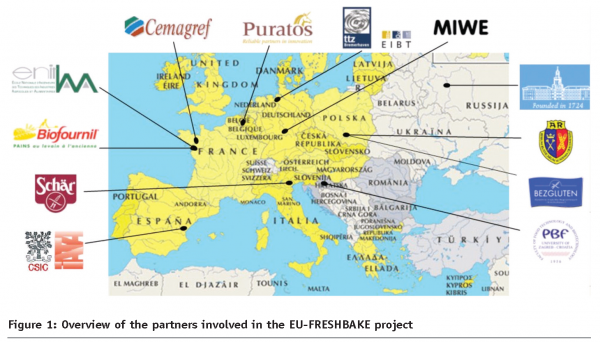

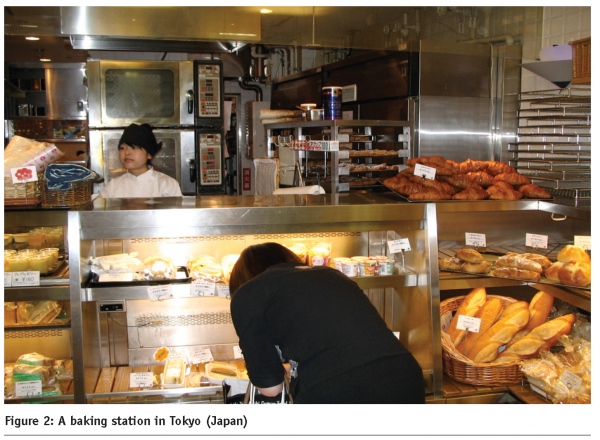

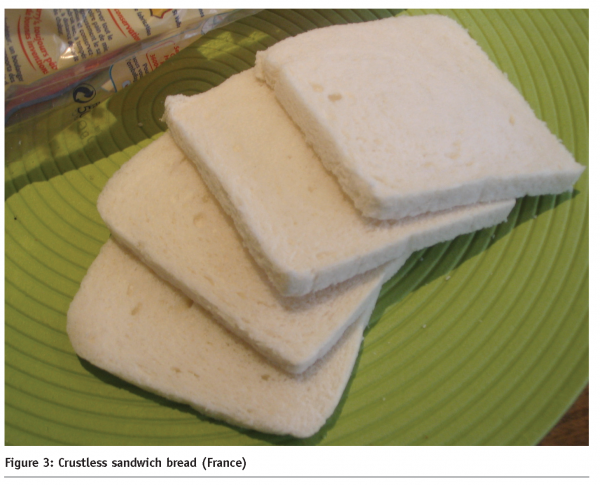

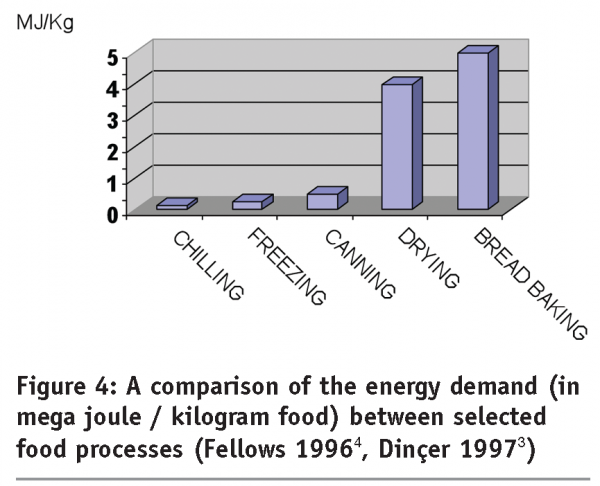

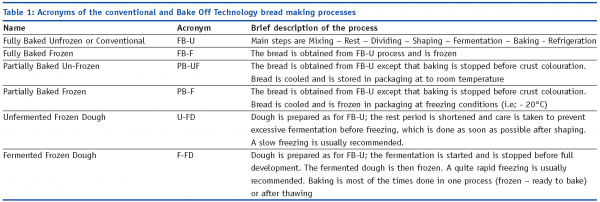

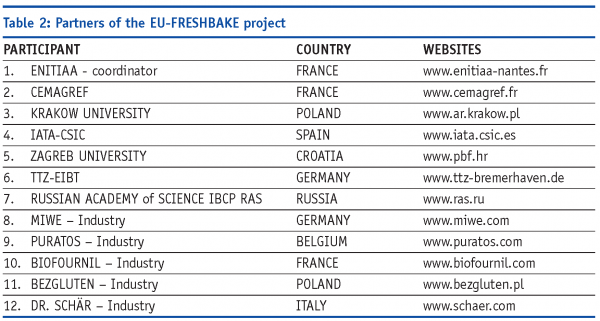

References
- Borczak, B., P. Pisulewski, M. Sikora and J. Krawontka (2008). “Comparison of glycemic responses to frozen and non-frozen wheat rolls in human volunteers – a short report.” Polish Journal of Food and Nutrition Sciences 58(3): 377-380.
- Christensen, A. and S. R. P. (1984). Energy consumption in the baking industry. Engineering and Food, Processing Applications. B. M. Mckenna. London, Elsevier – Applied Science Publishers. Vol. 2: 965-973.
- Dinçer, A., Ed. (1997). Heat transfer in food cooling applications. New York USA, Taylor & Francis,.
- Fellows, P. J. (1996). Food Processing Technology Principles and Practice. Cambridge, Woodhead Publishing. Series in Food Science and Technology: Chap. 1:54-58 and Chap. 15:314-327.
- Lambert, J. L., A. Le-Bail, R. Zuniga, I. Van-Haesendonck, E. Van-Zeveren, C. Petit, M. C. Rosell, C. Collar, D. Curic, I. Colic-Baric, M. Sikora and R. Ziobro (2008). “The attitudes of European consumers toward innovation in bread; interest of the consumers toward selected quality attributes.” Journal of Food Quality Accepted
- Le-Bail, A., N. Hamdami, V. Jury, J. Y. Monteau, A. Davenel, T. Lucas and P. Ribotta (2006). “Examining crust problems resulting from processing conditions with respect to freezing.” New Food Magazine – Russell Publishing Ltd Vol. 3: 10-14.
- Le-Bail, A., J. Y. Monteau, F. Margerie, T. Lucas, A. Chargelegue and Y. Reverdy (2005). “Impact of selected process parameters on crust flaking of frozen part baked bread.” Journal of food engineering 69: 503-509.
- Poinot, P., J. Grua-Priol, G. Arvisenet, C. Rannou, M. Semenou, A. Le-Bail and C. Prost (2007). “Optimisation of HS-SPME to study representativeness of partially baked bread odorant extracts.” Food Research International 40: 1170-1184.
- Ribotta, P. and A. Le-Bail (2007). “Thermo-physical and thermo-mechanical assessment of partially baked bread during chilling and freezing process. Impact of selected enzymes on crumb contraction to prevent crust flaking.” Journal of Food Engineering 78(3): 913-921.
- Rosell, C. M. and M. Gómez (2007). “Freezing in breadmaking performance: frozen dough and part- baked bread.” Food Reviews International (23): 303-319. .
- Sanz Penella, J. M., C. M. Rosell and M. Haros (2007). “Effect of fungal phytase addition, fermentation and freezing on the phytate degradation of whole wheat dough” Cereals-The future challenges. ICC Conference Proceedings.
- Vanin, F.M., Lucas, T., & Trystram, G. (2009). Crust formation and its role during bread baking. Trends in Food Science & Technology, in preparation.






